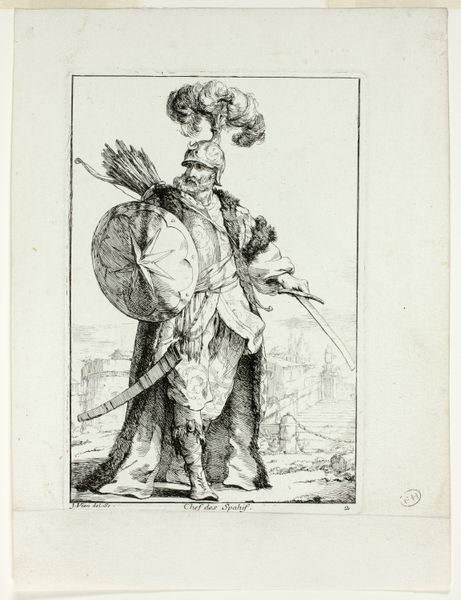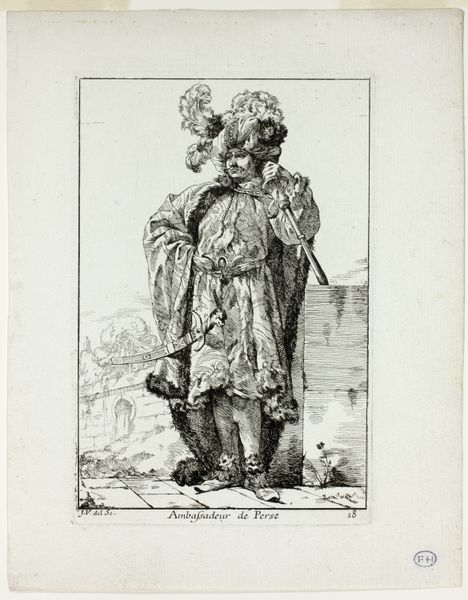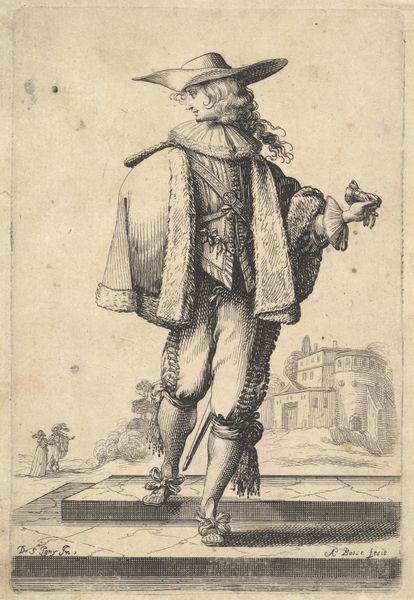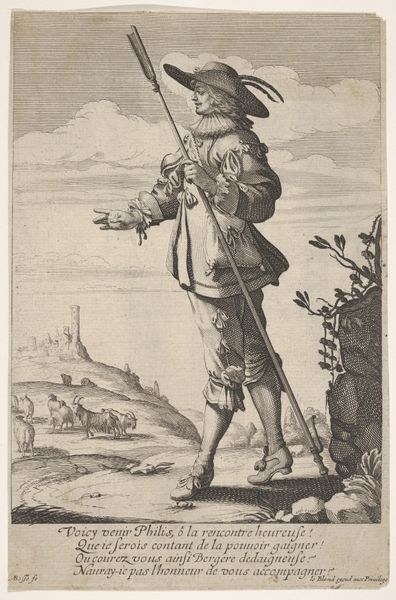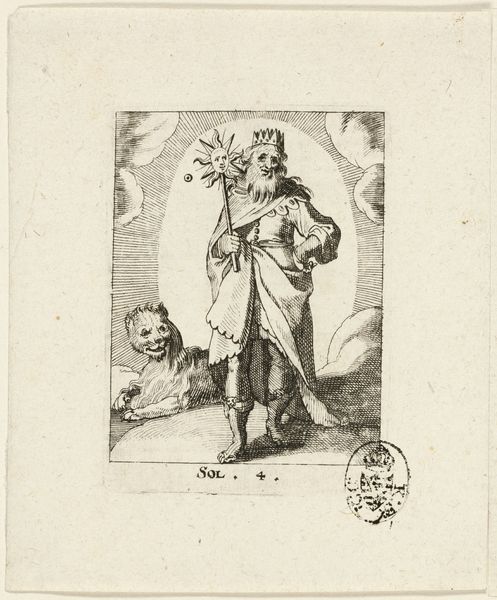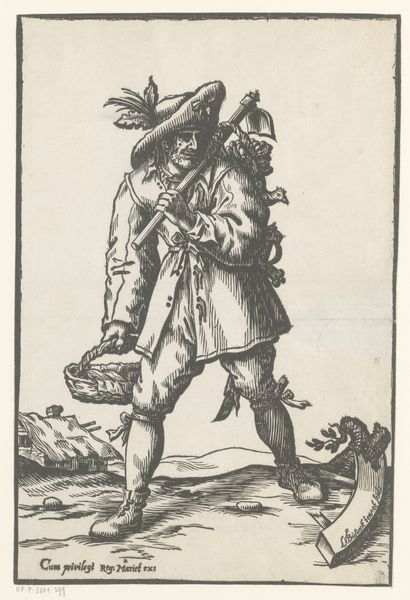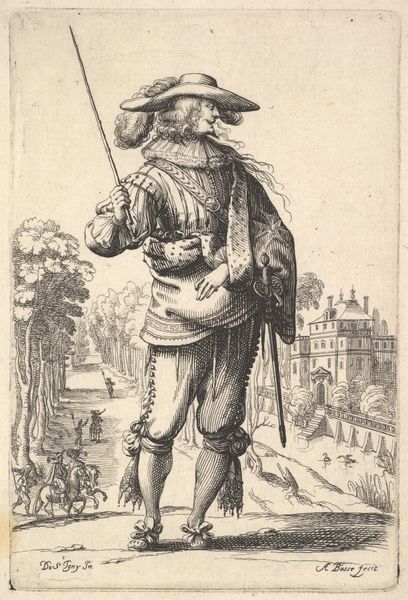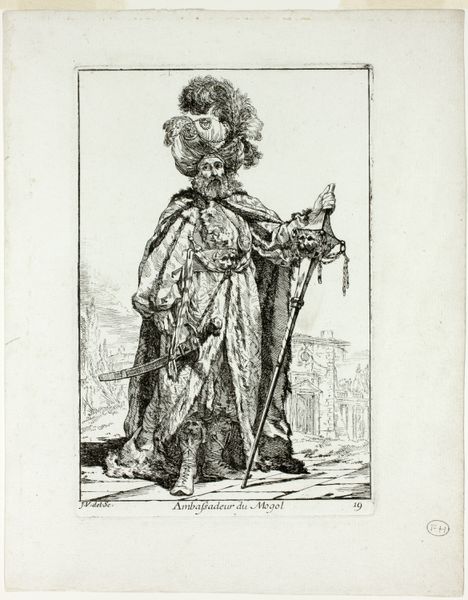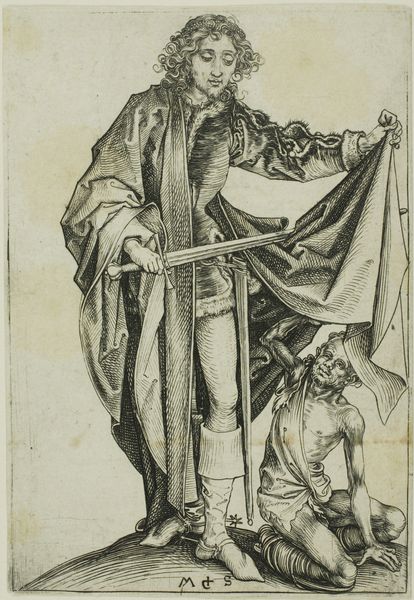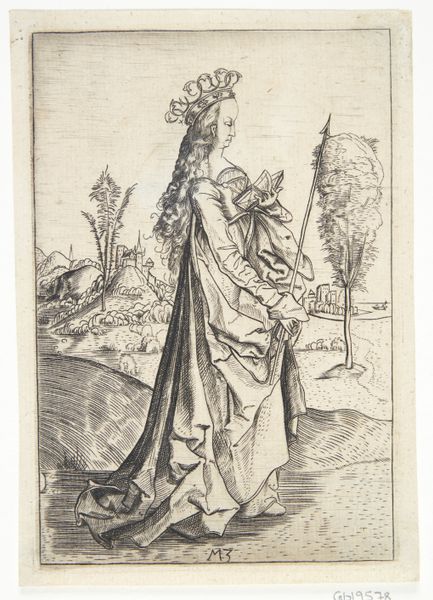
Garde du Grand Seigneur, plate thirteen from Caravanne du Sultan à la Mecque 1748
0:00
0:00
drawing, print, etching, paper
#
portrait
#
drawing
#
baroque
# print
#
etching
#
figuration
#
paper
#
history-painting
Dimensions: 194 × 132 mm (image); 203 × 135 mm (plate); 261 × 207 mm (sheet)
Copyright: Public Domain
Curator: Today we are looking at “Garde du Grand Seigneur,” plate thirteen from the series "Caravanne du Sultan à la Mecque" crafted in 1748 by Joseph Marie Vien. It is a meticulously detailed etching printed on paper, currently held here at the Art Institute of Chicago. Editor: Immediately, I see a figure radiating a somewhat theatrical pride, almost arrogance. He is standing confidently, the etching style itself lending an air of historical importance, the background seems almost dream-like behind the main figure. Curator: Let’s consider the artist’s process. Vien, known for his Neoclassical leanings, ironically engages with an orientalist subject through printmaking. The etching process itself would have involved coating a metal plate, incising the design, and then applying acid to create the recessed lines for the ink. This was all very controlled, skilled labor. Editor: Indeed, his costume screams of power and wealth; consider the feathers adorning his head, the fur trim of his outer robe, and the weaponry that surrounds him. These are potent symbols within the context of depictions of figures from the Ottoman Empire during that period, symbols of majesty and the exotic East. Curator: It’s also worth noting that prints such as this would have been disseminated widely, becoming sources of visual knowledge—or, perhaps more accurately, visual constructions—about other cultures. The image becomes a commodity, subjected to the forces of distribution and consumption. Editor: Yes, this portrayal certainly fed into existing European fantasies and understandings, solidifying and, arguably, distorting the image of the “Grand Seigneur.” It speaks to the enduring fascination with the exotic "other," and the iconography that defines power, religion and identity for that time. Curator: Examining Vien's choice of etching as a medium and his calculated compositions gives us an avenue to explore the interplay between artistic craftsmanship and the manufacturing of cultural ideas in eighteenth century Europe. Editor: Precisely, Vien has crafted more than an image; he has built a symbol of an era. The artwork as a whole remains potent, carrying centuries of artistic vision as well as social narrative.
Comments
No comments
Be the first to comment and join the conversation on the ultimate creative platform.
